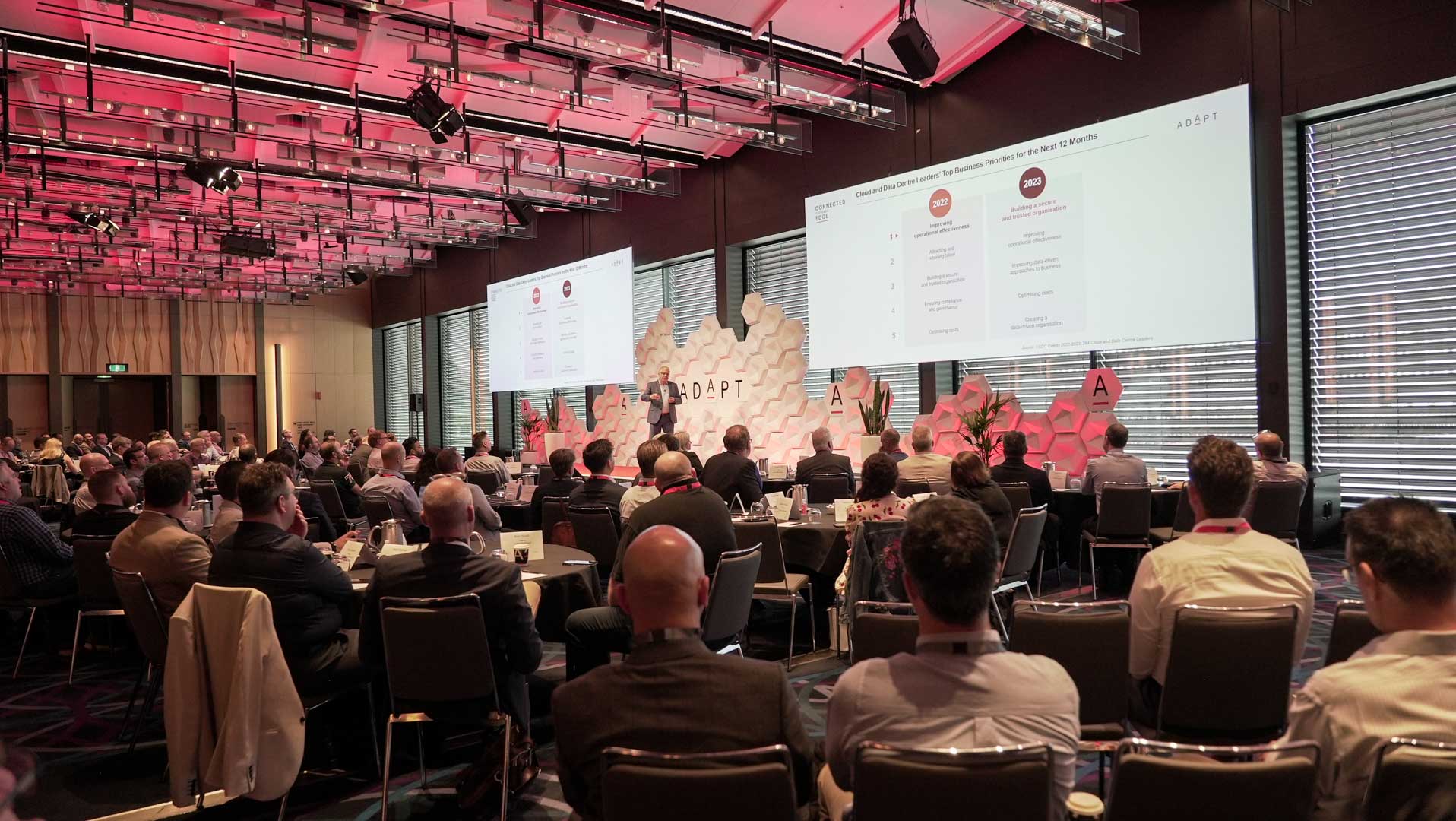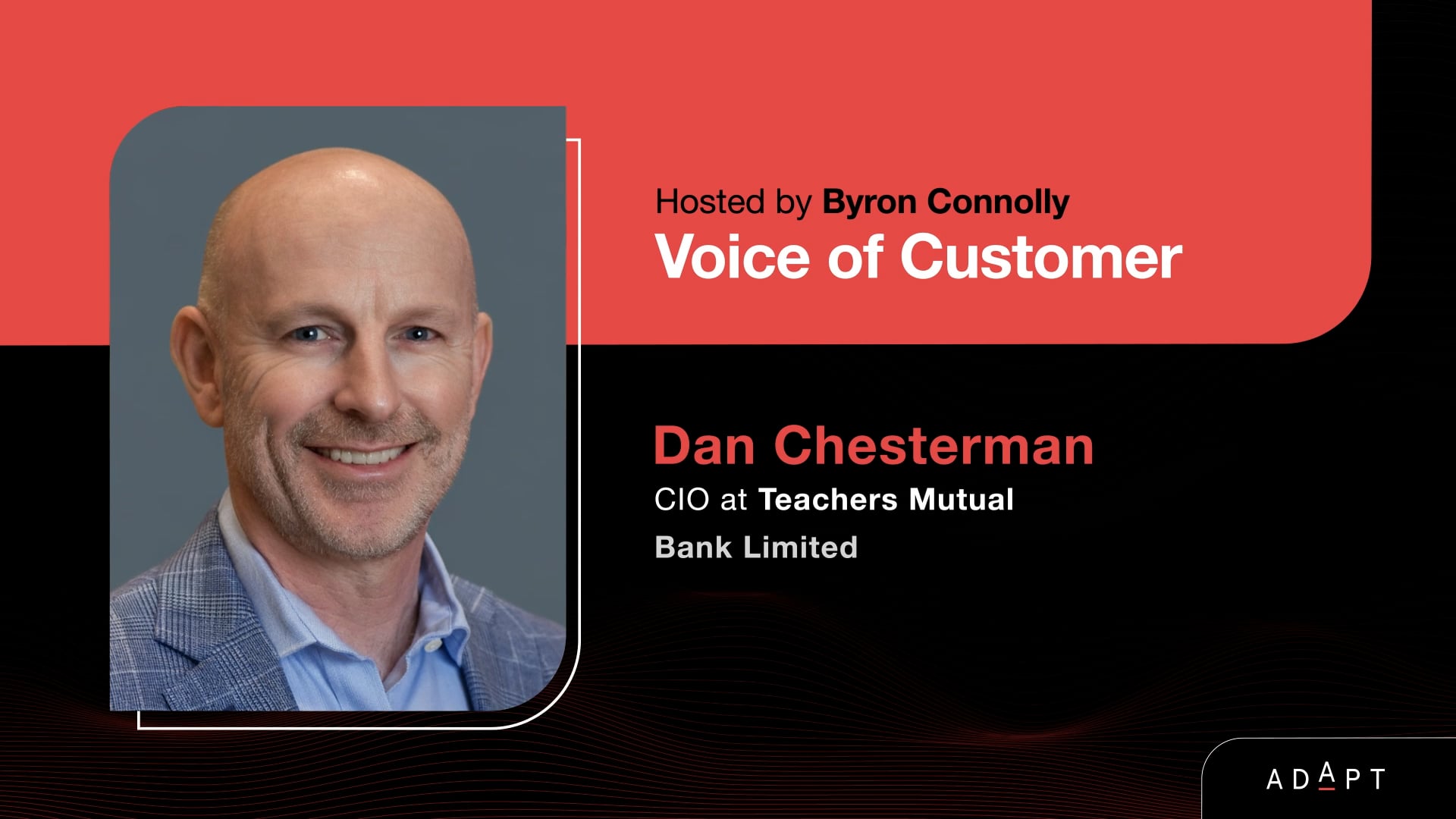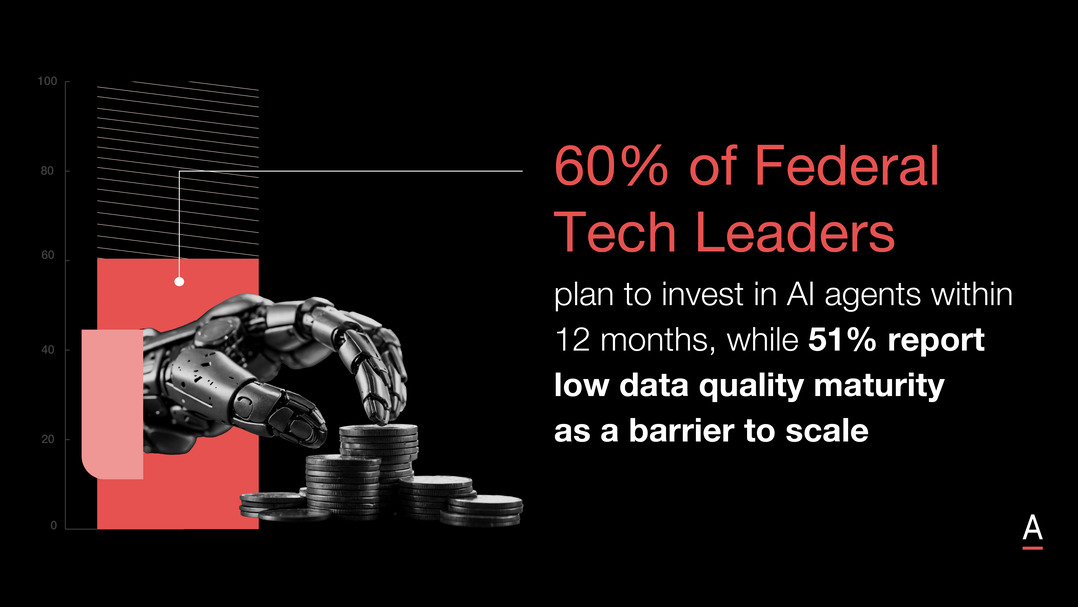Strategic Insights into Navigating the ANZ Technology Landscape
Unlock growth in the ANZ tech scene with strategic insights. Understand challenges, priorities, and success measures for long-term success.
Navigating the dynamic business environment of Australia and New Zealand (ANZ) requires strategic planning to overcome challenges and seize opportunities for long-term success.
As such, it’s crucial for tech vendors to understand the challenges, priorities, and success measures corporate leaders in ANZ are facing in this ever-changing environment.
Chief Information Officers Spearhead Tech-Enabled Growth and Data Privacy Initiatives
Australian CIOs Tackle Growth Challenges in 2023
Their paramount concern is establishing a secure and trustworthy organisational structure, particularly in the aftermath of notable data breaches in 2022.
This highlights the urgent need to protect data privacy as a vital countermeasure in maintaining customer trust and safeguarding brand reputation.
ADAPT’s Head of Analytics & Insights Gabby Fredkin argues that achieving exponential growth demands a well-calibrated strategy involving modernisation, digitisation, and fostering skills and mindsets conducive to success.
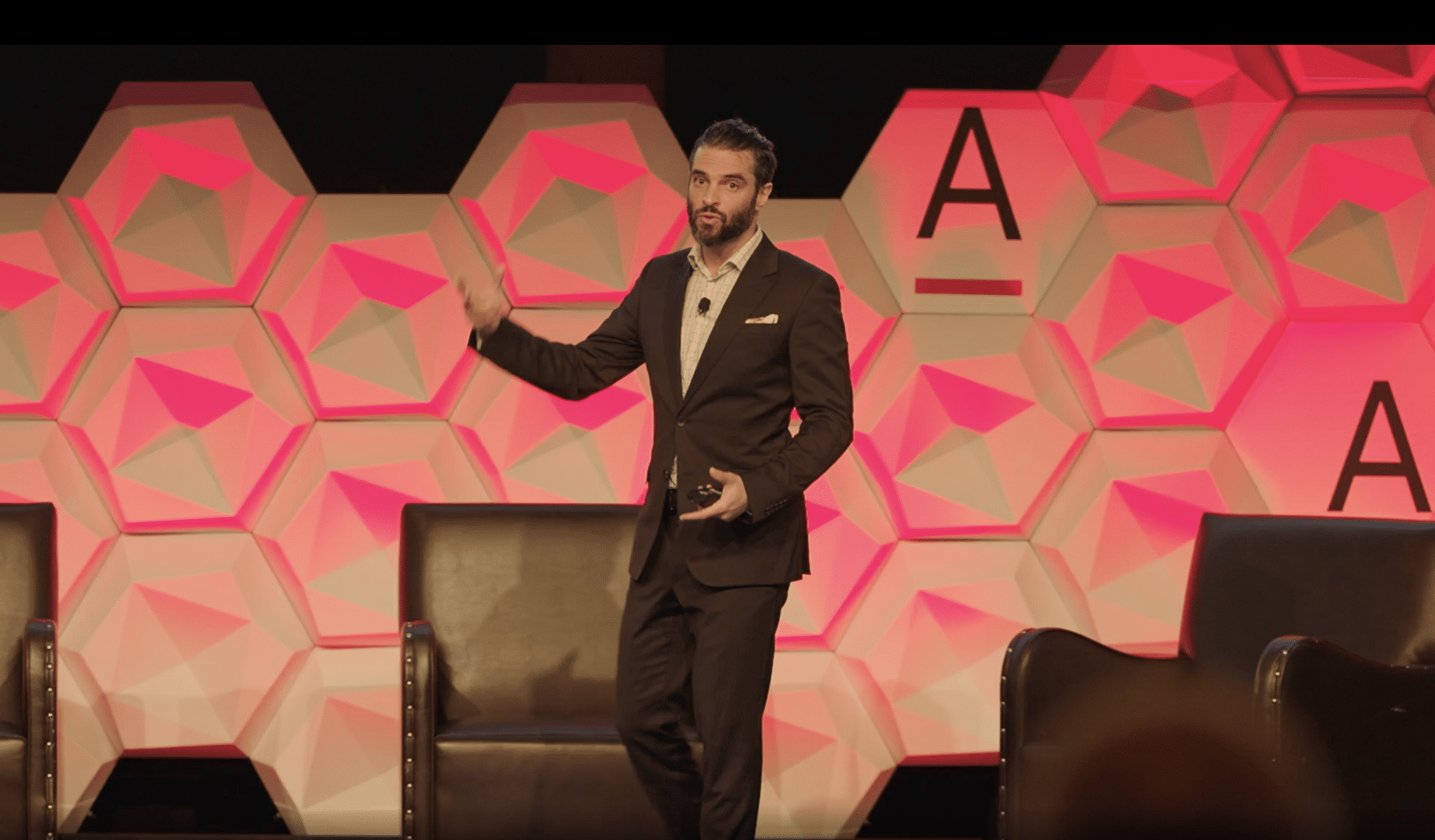
He dives into how much cloud usage impacts an organisation, distinguishing between less and highly modernised enterprises.
It’s a clear divide: those with 60% of their workload in the cloud are better at handling IT challenges, security, and staying resilient in cyber space.
Gabby also introduces the Exponential Value Realisation (EVR) framework, shining a light on the crucial role of digitisation and interdepartmental connectivity for cost-effectiveness.
Advocating for a digital-first mindset, the framework aims to boost collaboration and extract maximum value from operations and customer interactions.
Gabby’s evaluation of organisations based on EVR metrics aims to gauge their potential to overcome challenges and achieve exponential growth.
He emphasises the need to focus on challenges like building a digitally literate workforce to lead initiatives.
The discussion also points out roadblocks like old-school thinking, budget limits, and juggling different business priorities.
Managing IT, selecting suitable projects, and driving purposeful outcomes can be particularly challenging for less modernised organisations.
Key Takeaways:
- Be a strategic partner in enabling Australian CIOs to drive tech-enabled growth, emphasising data privacy and a digital-first approach.
- Support the implementation of cost-effective Exponential Value Realisation (EVR) frameworks that facilitate enhanced collaboration and strategic modernisation.
- Cater to the needs of CIOs looking to balance innovation with practical, value-driven outcomes in 2023.
Charting IT Prioritisation for the Evolving Digital Landscape
A panel discussion featuring Sami Yalavac and Peter Hind explored IT project prioritisation challenges.

Businesses today face the dual challenge of limited resources and heightened expectations for digital transformation. This situation calls for a shift towards collective decision-making, moving beyond a narrow IT-centric viewpoint.
Sami highlighted the critical role of IT leaders in aligning with overall business priorities and embracing a proactive approach.
Meanwhile, Gabby Fredkin talks about how achieving exponential growth requires a strategic blend of modernisation, digitisation, and skills development.
The diversity in public cloud workloads highlights the need for businesses to adapt to the evolving digital landscape.
Emphasising nurturing a digitally literate workforce, overcoming technological barriers, and prioritising organisational modernisation are also crucial.
Less modernised organisations face specific challenges, such as effective IT management, project prioritisation, and maintaining alignment with purpose-driven outcomes.
These call for a proactive, business-aligned prioritisation and adaptability to navigate dynamic IT challenges and turn challenges into opportunities.
Key Takeaways:
- Provide flexible and adaptable solutions that support IT leaders in aligning with broader business priorities.
- Facilitate proactive decision-making and enable a strategic combination of modernisation and digitisation.
- Offer resources for skills development, crucial for IT leaders aiming to achieve exponential growth amid evolving challenges.
Chief Digital Officers Revolutionise Data Management for Enhanced Customer Experiences
Tackling Inconsistent Data and Competing Priorities with the CDO in Contemporary Data Management
Organisations are facing multifaceted challenges in the complex field of data management.
CDOs highlighted a major obstacle: effectively managing inconsistent data across various platforms, which obstructs smooth customer experience delivery.
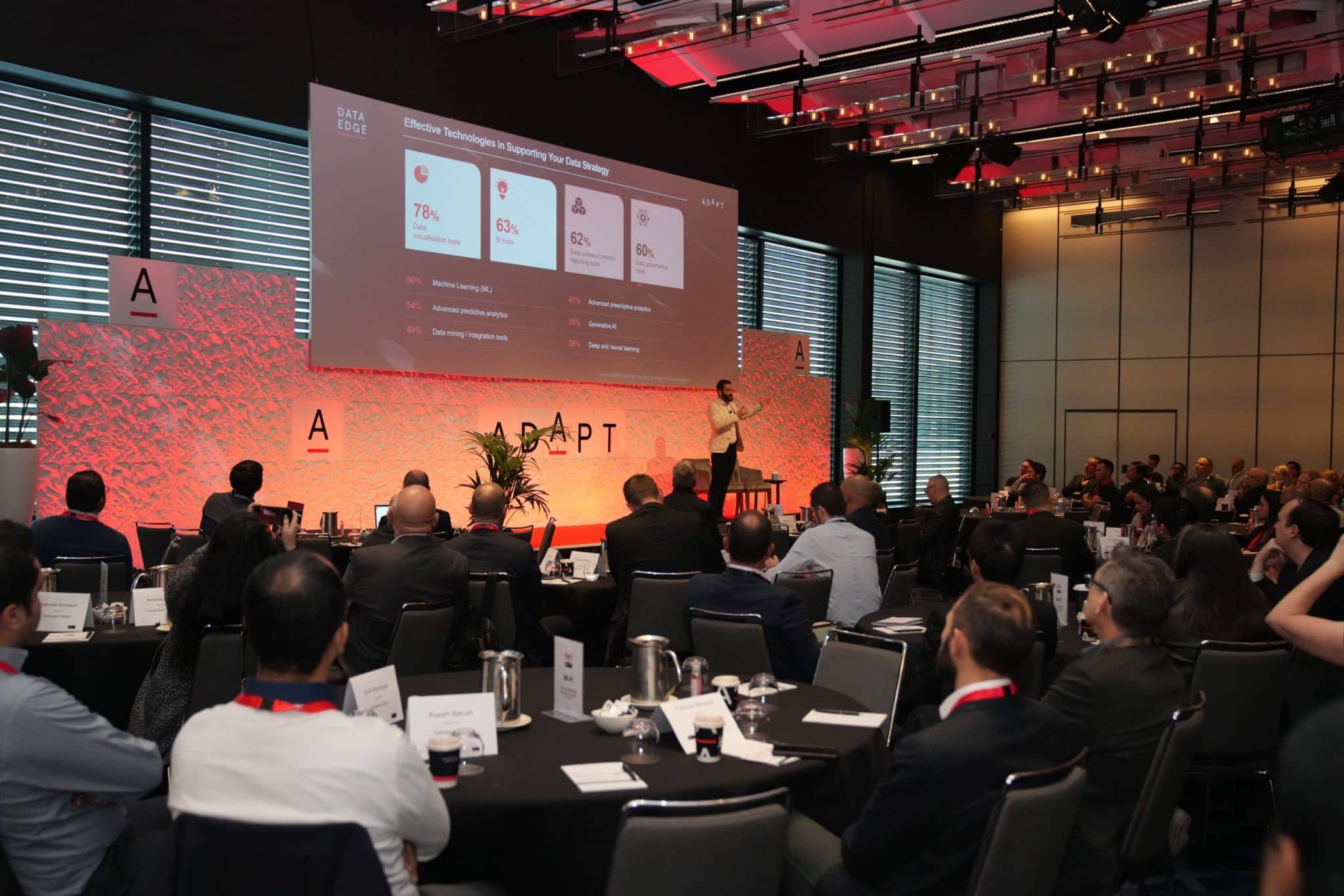
This issue has led to a strategic shift, focusing on data quality and governance investments to tackle the underlying problems.
At the same time, the persistent issue of competing business priorities emerges as a recurrent obstacle, affecting different leadership roles.
It illustrates the need for a delicate balance to align with diverse organisational objectives.
The situation becomes more complex as the absence of a consistent data culture, combined with these competing business priorities, introduces further challenges in the evolving skills landscape.
This is characterised by noticeable gaps in data literacy and the shift from traditional data architects to specialised AI and ML experts, adding to the complexities organisations face in effectively managing data.
Key Takeaways:
- Position your solutions as essential tools for Chief Digital Officers grappling with inconsistent data management.
- Showcase how your products can facilitate strategic investments in data quality and governance.
- Highlight the benefits of adapting to an evolving skills landscape, with a focus on the growing need for AI and ML expertise.
This approach will align with market demands and attract tech executives looking to integrate advanced technologies and drive strategic decision-making in the ANZ market.
Driving Data Transformation Are CDO’s Top Priority in Australian Organisations
As organisations face challenges, strategic initiatives are being prioritised to effectively utilise data for overall success.
The CFO’s transformative focus on increasing dashboard usage signals a shift towards commercial analytics, highlighting the growing need for business analytics skills.
Simultaneously, the CDO lays out priorities, focusing on exploring new insights and automating customer journeys, contingent upon improvements in data hygiene.
In Human Resources, cyber security stands out as a critical priority, reflecting the urgent need for digital skills.
Moreover, the focus on building strong relationships with key figures like the CIO and CFO reflects the organisation’s commitment to collaboration and effective communication in achieving strategic objectives.
These varied priorities come together to form a unified narrative. They highlight a collective effort to use data for making informed decisions, improving customer experiences, and driving broad strategic transformations.
Key Takeaway:
Emphasise the value of cohesive approaches, showcasing how you can help organisations align distinct priorities for insightful decision-making, improved customer experiences, and comprehensive strategic transformations.
Mastering Digital Transformation in New South Wales’ Strategic Approach
ADAPT’s discussion with Laura Christie, Chief Digital & Information Officer at NSW Govt & Deputy Secretary of Digital NSW, explored key aspects of digital transformation.
Laura starts by discussing the profound impact of the Digital Restart Fund on agile product delivery, emphasising a significant shift in the funding landscape.
This fund not only promotes agility but also redefines traditional funding models.
Turning to infrastructure, Laura focused on the development of a spatial digital twin, underlining its potential to enhance infrastructure delivery.
This initiative is a prime example of leveraging technology to inform and improve decision-making processes.
Laura then shifts to AI’s role in government priorities, highlighting the weight of ethical considerations when integrating AI into governance.
This strategic direction aims to enhance efficiency and dynamically meet the evolving needs of citizens.
She then sheds light on accessibility and inclusivity in digital services.
Drawing from her experiences, Laura emphasises the need to design services that cater to everyone, including those in often overlooked edge cases.
The conversation then turns to cultural change and cyber security challenges.
Christie highlighted the necessity of collaborative efforts to tackle these issues and the establishment of an ethical framework for secure AI implementation.
The conversation concluded with a forward-looking view on digital identity. She envisions a future with decentralised systems, providing individuals with more control over their data.
This approach aims to empower citizens and tackle cyber security concerns by reducing centralisation vulnerabilities.
Key Takeaways:
- Facilitate agile product delivery, address infrastructure challenges, ensure accessibility and inclusivity of digital services.
- Enable ethical AI integration to be a key partner in transformation initiatives of digital leaders, especially those in the public sector.
Chief Data Officers Bridge Skill Gaps for Enhanced Cyber Security and Data Proficiency
Bridging the Gap in End-User Skills for Chief Data Officers
Gabby Fredkin outlines the host of challenges that Chief Digital Officers (CDOs) and their respective departments face.
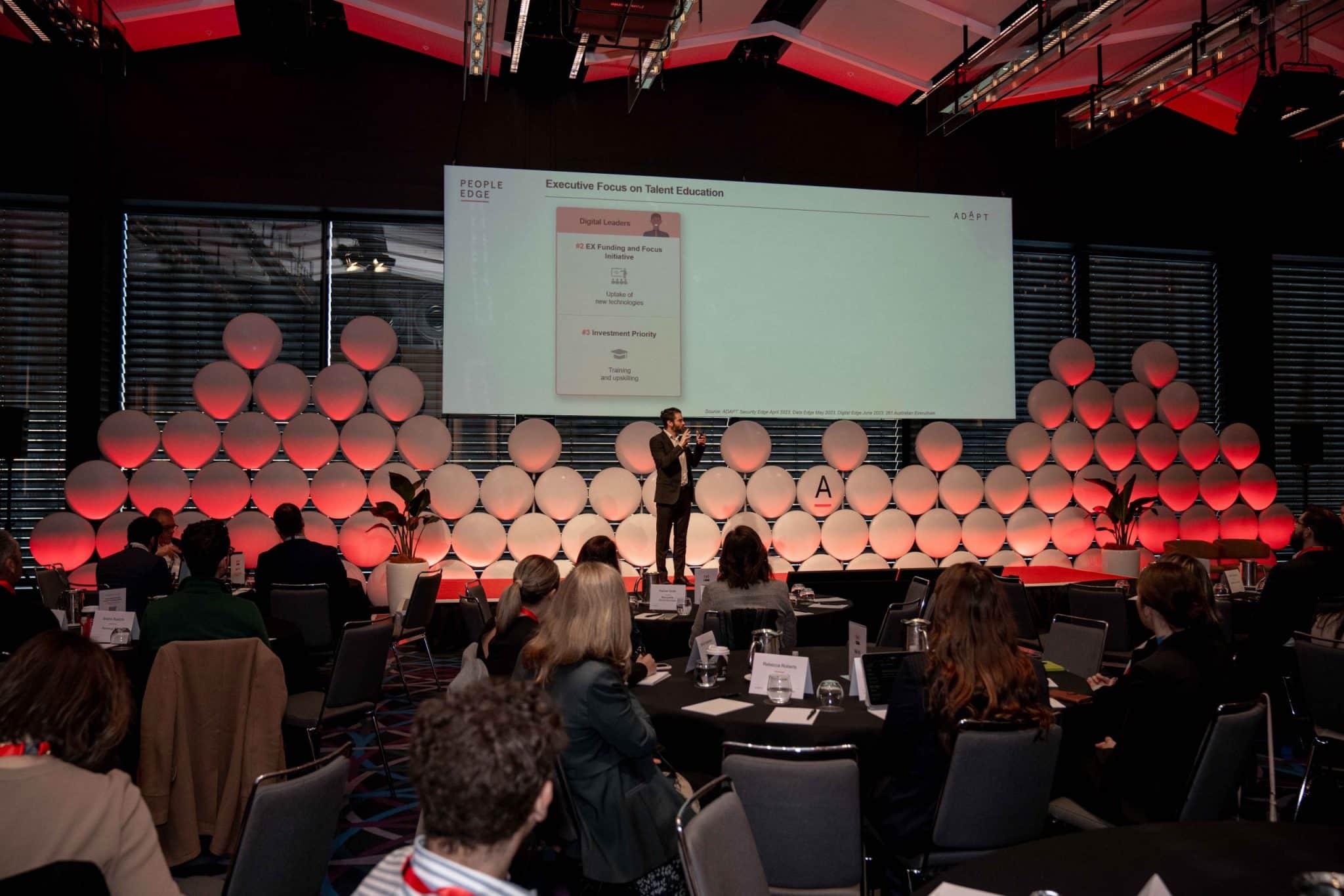
A key concern in cyber security is the pressing need for more adept professionals in Chief Information Security Officer (CISO) departments.
The discussion highlights the difficulties of operating in a limited skills market, characterised by frequent talent poaching.
Similarly, data departments face challenges due to a lack of end-user skills, particularly in mathematical literacy and data tool proficiency.
Key Takeaways:
- Understand the challenges Chief Digital Officers face with cyber security expertise shortages and mental health issues.
- Align your strategies to address these gaps, particularly in areas like mathematics and data tool proficiency.
Illuminating the Path to Organisational Objectives through Data-Driven Decision-Making
Conversely, Gabby Fredkin outlines critical priorities for digital leaders in this evolving landscape.

Operational effectiveness is key, focusing not just on streamlined operations but also on strategic automation implementation to enhance employee experience and retain top talent.
Security and trust are paramount, with an increased focus on cyber security to bolster defenses against potential data breaches that could profoundly affect brand reputation and customer trust.
The strategic imperative of data-driven decision-making is highlighted, showcasing the essential role of data in guiding initiatives and achieving organisational goals.
Key Takeaway:
Stress operational effectiveness, cyber security, and data-driven decision-making in their offerings to Chief Digital Officers for guiding initiatives and achieving organisational goals.
Navigating the Path to Digital Transformation Insights from Macquarie Bank’s Chief Data Officer
In an interview, Ashwin Sinha, Executive Director, and Chief Data Officer at Macquarie Bank, shares key insights into building an efficient data infrastructure for digital transformation.

Ashwin identifies strategic focus areas at Macquarie Bank, including accelerating engineering delivery, enhancing data governance, promoting data literacy, and advancing artificial intelligence.
He stresses data quality and processing speed for achieving success in digital transformation.
Ashwin also spotlights the continuous and evolving nature of transformation, which brings to focus the need for synergy between digital transformation strategy, data strategy, and technology modernisation to avoid working in silos.
Simplifying interfaces, extracts, and dashboards is a crucial aspect of the data strategy aimed at streamlining the data landscape.
Ashwin champions technology modernisation and consolidating data warehouses, aligning with goals centred on simplification and modernisation.
He emphasises proactively enhancing performance processes and the need for accurate metrics in management and board discussions, particularly for stakeholders with a limited understanding of data complexities.
Key Takeaway:
Highlight your services as crucial for organisations building an efficient data infrastructure for digital transformation, focusing on aligning digital transformation, data strategy, and technology modernisation, with continuous improvement in risk management and clear communication with the Board.
Chief Financial Officers Drive Financial Resilience and Effective Talent Strategies in Challenging Times
Challenges in the Financial Landscape
CFOs grapple with multifaceted challenges in project delivery, particularly when dealing with the impact of competing business priorities.
Effectively managing these challenges demands skillful navigation through a multifaceted landscape, where legacy technology burdens, characterised by technological debt and entrenched mindsets, pose substantial obstacles. This impedes progress towards operational efficiency and effectiveness.
A critical issue is the talent shortage, especially in vital areas like data analytics and cyber security.
This lack of skilled professionals in these fields adds complexity to the financial leadership landscape.
Furthermore, organisations encounter intricate challenges in cloud investments, including the need for effective cost management and the shift from traditional capital to operational expenditure.
This complex environment demands strategic approaches to ensure financial leadership aligns with the evolving technological demands and organisational objectives.
Key Takeaways:
- Develop strategies that help CFOs navigate project delivery challenges, including legacy technology issues and talent shortages.
- Align with evolving technological demands in the financial landscape and help make sense of competing business priorities and cloud investment complexities by providing flexibility in your services.
Steering Financial Leadership with Priorities in Efficiency, Talent, and Resilienc
CFOs prioritise optimising costs, aligning investments for maximum value, and enhancing operational effectiveness.
Talent challenges, particularly in the finance sector, emerge as a notable concern, calling for targeted strategies for attraction and retention.
Recent outages have brought attention to the growing value of security and trust, emphasising the need for resilient financial operations.
Key Takeaway:
Communicate how you can enable cost optimisation, talent management strategies, and operational resilience.
This addresses the need for resilient financial operations amid heightened security and trust concerns in the finance sector.
CFO Jenny Saliba Guides Australian Unity Amid Economic Challenges, Prioritising Resilience and Growth
Jenny Saliba, CFO for Wealth, and Capital Markets at Australian Unity, navigates a complex economic landscape influenced by macroeconomic factors, interest rates, inflation, and supply constraints.
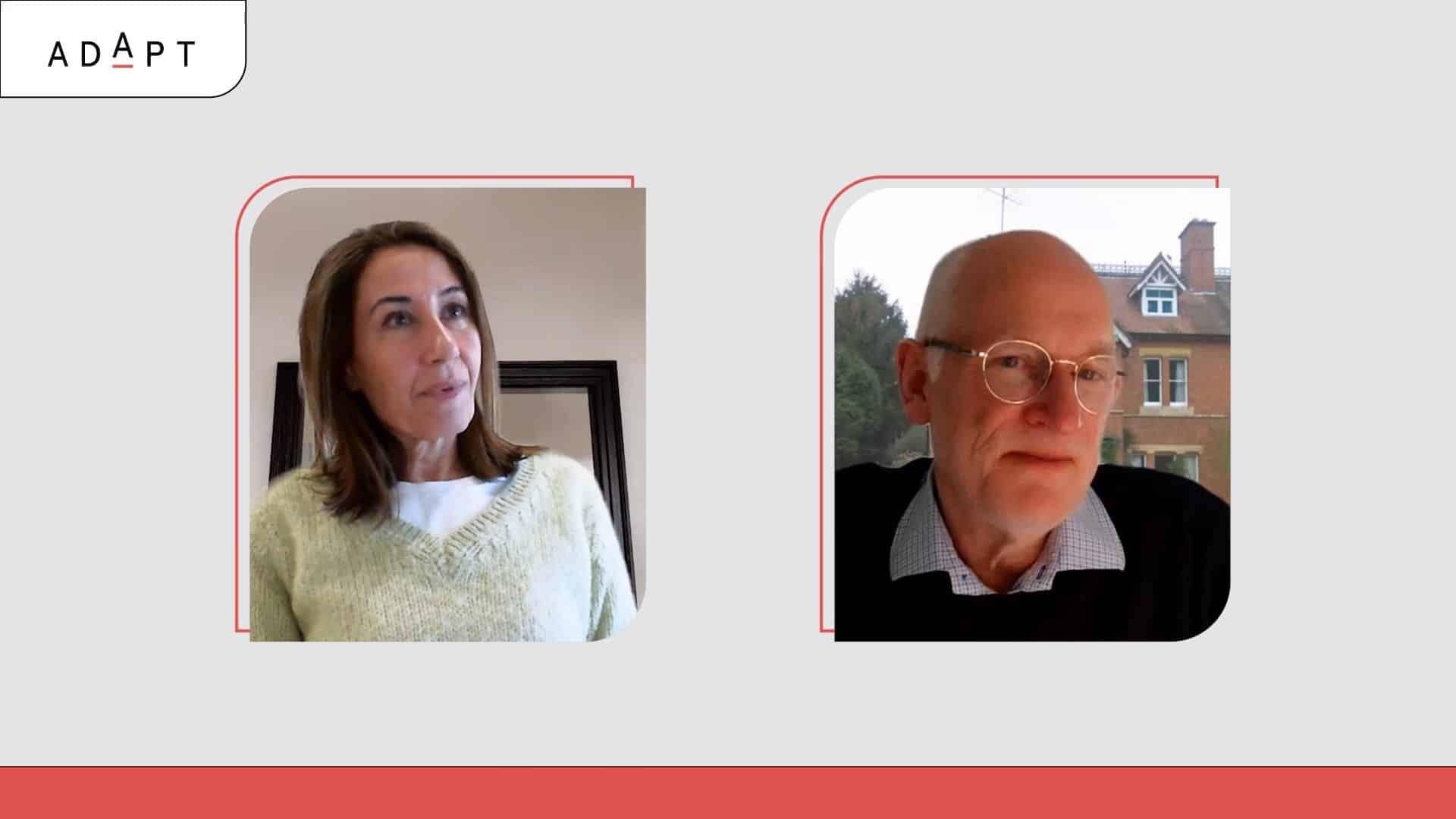
Operating in a sector distinct from government-funded areas within Australian Unity, Jenny and her team faces unique challenges, including inflation and skill shortages that affect productivity and employee engagement.
Jenny recognises the potential negative impact of inflation on disposable income, which could lead to decreased motivation and burnout, similar to experiences during the peak of the COVID-19 pandemic.
The hybrid work environment complicates maintaining a cohesive culture and sustaining high engagement levels.
In the face of these challenges, Jenny emphasises the importance of resilience in both technology and the workforce.
Resilient employees play a crucial role in effectively managing unexpected challenges, which have become commonplace in today’s business environment.
Regarding technology, Jenny acknowledges past investments but observes that not all projects met expectations, prompting a more cautious approach for future tech projects.
Despite setbacks, she emphasises technology’s role in enhancing productivity. Jenny is implementing a more rigorous due diligence process for future tech projects to maximise value.
The conversation emphasises a strong focus on growing the top line to add value to the company.
She prioritises a balanced approach, considering both short-term goals and long-term visions for implementing effective strategies and ensuring sustainable growth.
Key Takeaways:
CFO Jenny Saliba of Australian Unity tackles unique challenges in a complex economic landscape, emphasising the need for technology and workforce resilience to navigate uncertainties.
She emphasises a cautious approach to tech projects, highlighting the importance of balancing short-term goals with long-term visions to ensure sustainable growth and value creation.
- Ensure your go-to-market strategy can address how your service can help CFOs navigate unique challenges in a complex economic environments
- Focus on resilience in technology and workforce and provide a cautious approach to tech projects that balance short-term goals with long-term visions for sustainable growth and value creation.
Conclusion
As we conclude this comprehensive overview of the ANS technology landscape, it’s evident that strategic planning is paramount for navigating the diverse challenges and opportunities across sectors:
- Chief Information Officers (CIOs): Strives to align technology initiatives with business objectives, balancing innovation with operational efficiency and navigating challenges such as legacy system integration, technology governance, and vendor management.
- Chief Digital Officers (CDOs): Focuses on driving digital transformation initiatives, leveraging emerging technologies to enhance customer experiences and operational efficiency while addressing challenges related to cultural change, data integration, and technology adoption.
- Chief Data Officers (CDOs): Prioritises driving data-driven decision-making and ensuring data quality and governance while grappling with challenges such as data silos, privacy concerns, and the need for advanced analytics capabilities.
- Chief Information Security Officers (CISOs): Prioritises building a secure and trusted organisational environment while facing challenges such as talent acquisition, compliance, and aligning cyber resilience with broader business goals.
- Chief Financial Officers (CFOs): Drives financial resilience, effective talent strategies, and operational efficiency amidst challenges, including project delivery, legacy technology burdens, talent shortages, and complexities in cloud investments.
- Cloud & Infrastructure Leaders: Prioritises cyber security, operational efficiency, talent acquisition, data security, cloud cost optimisation, and Zero Trust implementation amidst challenges like legacy technology burdens, talent shortages, and complexities in cloud investments and migrations.
Lead exponential growth in the ANZ tech landscape with effective strategic planning, embracing digital-first mindsets, and implementing robust frameworks in your arsenal.
Key Takeaway:
Align your offerings with each persona’s specific priorities and challenges, demonstrating how your solutions can address their needs and drive success in their respective sectors.

























